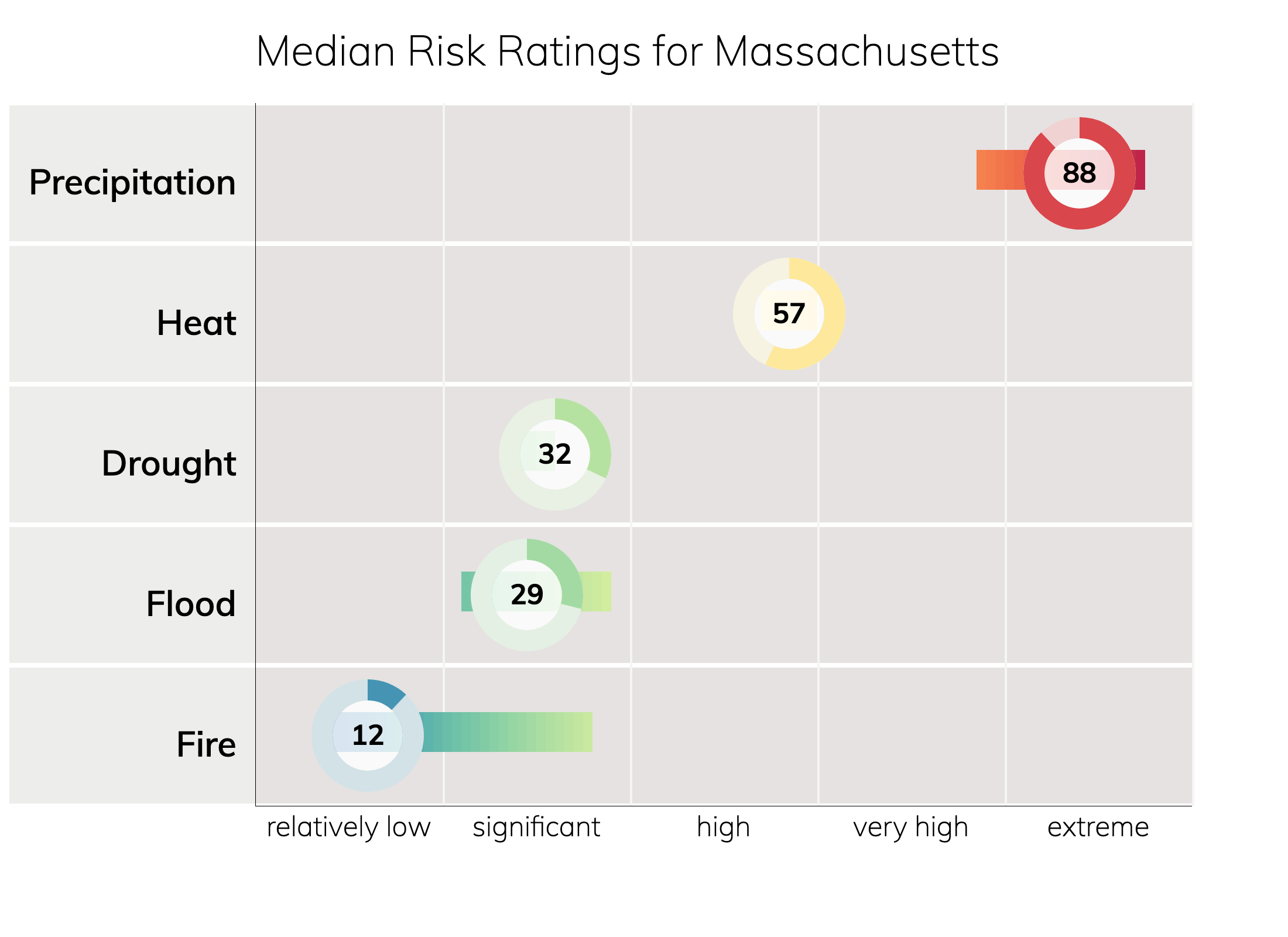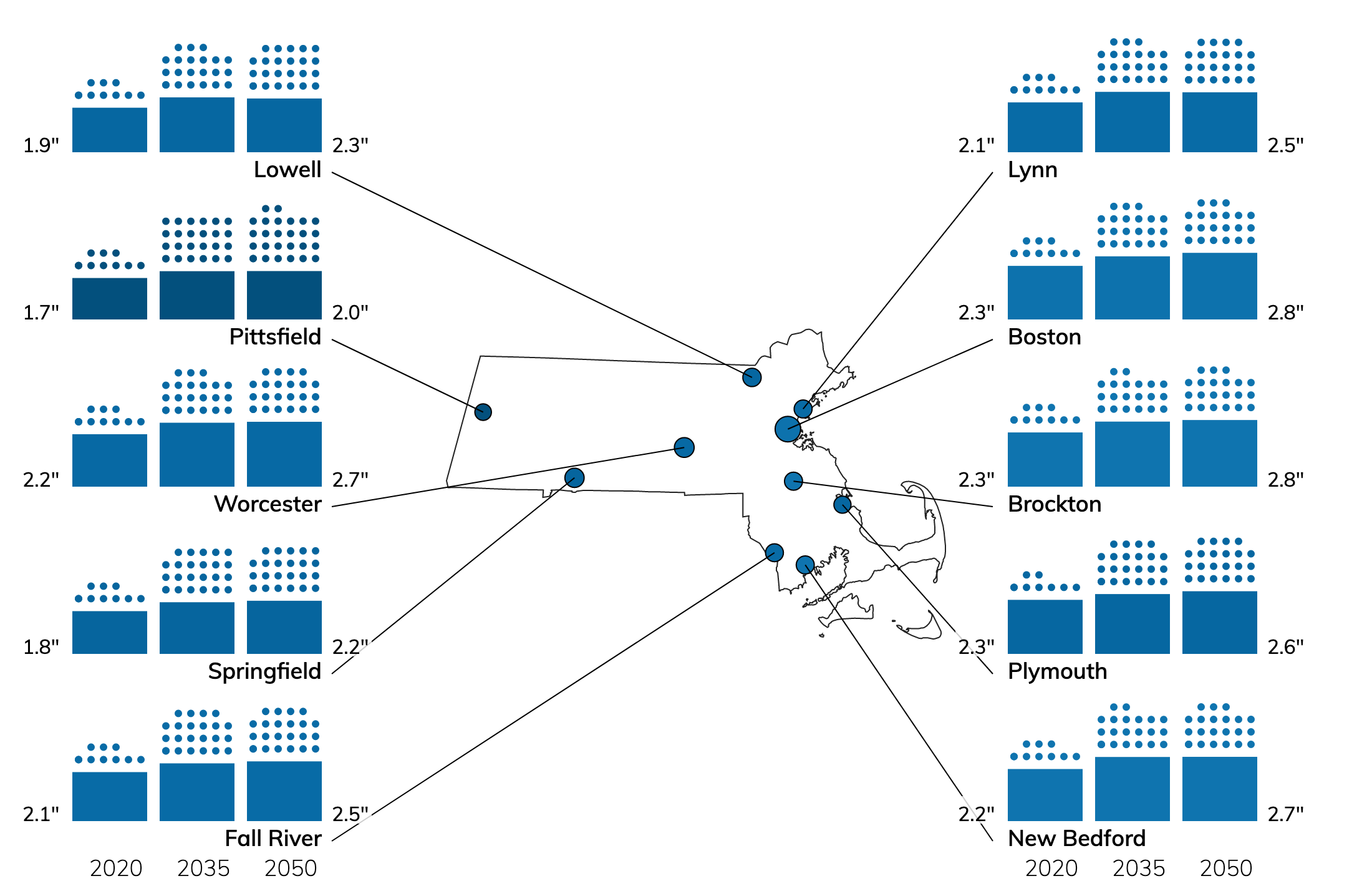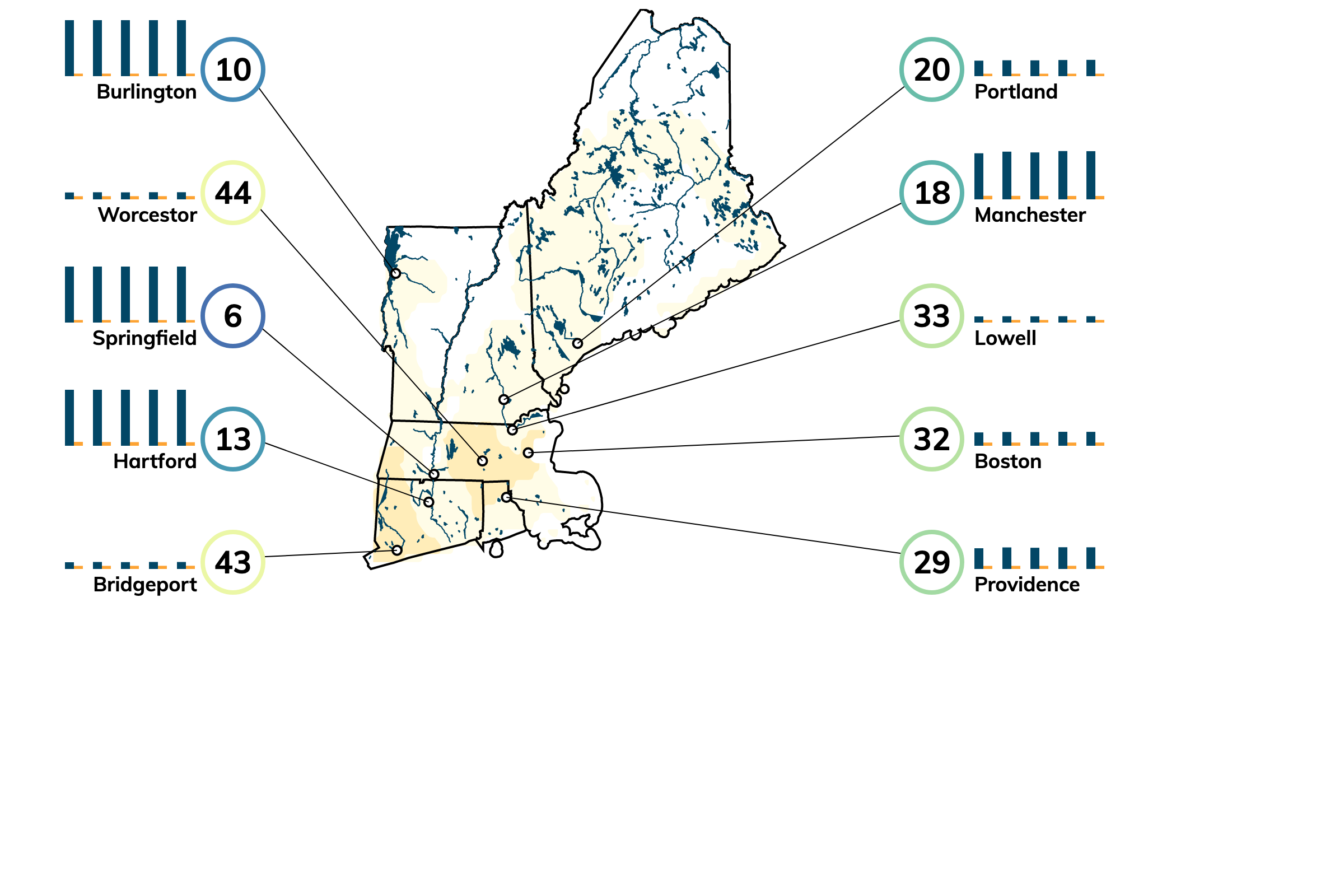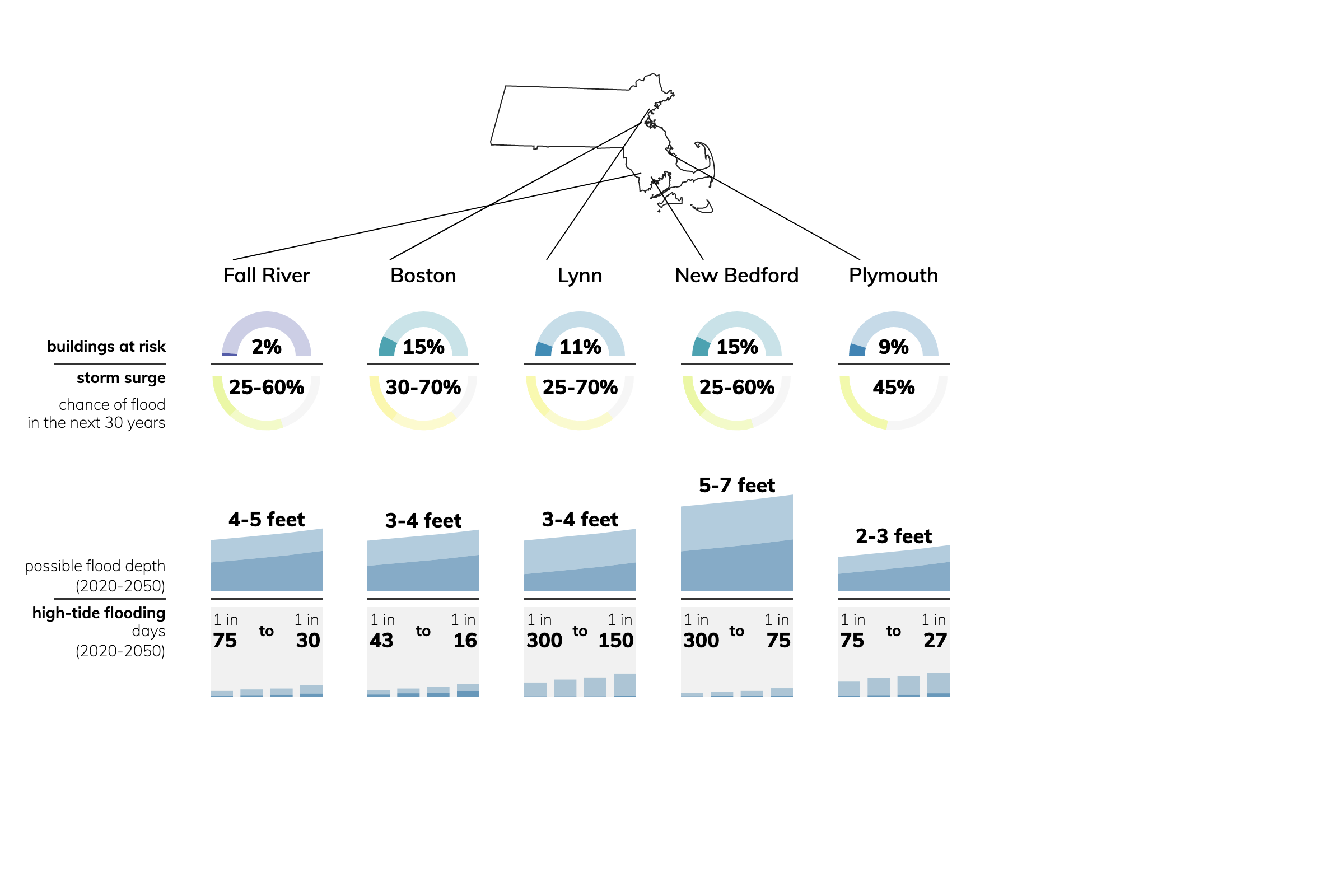Top Climate Change Risks: Precipitation, Heat, Drought
Use this page to learn how climate change is affecting people in Massachusetts.
Climate Change Risk Ratings for Massachusetts
People in Massachusetts will experience especially increased risks from precipitation, heat, and drought due to climate change over the next 30 years. These risks, through 2050 and beyond, may change depending on how much we reduce emissions in the near future.

Get an Instant Risk Assessment
Climate Risks for Cities in Massachusetts
Of these top cities in Massachusetts, the city with the highest overall risk is Boston. The city with the lowest overall risk is Fall River.
- For heat, Plymouth has the lowest risk and Springfield has the highest risk.
- For precipitation, Lowell has the lowest risk and Brockton has the highest risk.
- For drought, Springfield has the lowest risk and Worcester has the highest risk.
- For fire, Boston has the lowest risk and Plymouth has the highest risk.
- For flood, Springfield has the lowest risk and Plymouth has the highest risk.

Comparing Massachusetts and Other States
Among the lower 48 states, Massachusetts's highest ranking is #9 for flood risk.
Arizona and West Virginia rank highest for flood risk Utah and Nevada rank lowest for flood risk

Precipitation Risk in Massachusetts with Climate Change
To measure precipitation risk, we look at the amount of precipitation that falls in 48-hour periods exceeding a location-specific threshold, and how many times this happens per year. A precipitation threshold is based on the top 1% of rainiest days per year for a location.

Heat Risk in Massachusetts with Climate Change
An extremely hot day in Massachusetts depends on your location: 91ºF is extremely hot for Lowell, while 85ºF is considered extremely hot for Pittsfield. This is based on historical maximum temperatures on the top 2% of days in an average year.

The frequency of very hot days is increasing. On average, someone in Massachusetts will experience about 31 extremely hot days in 2050.

Drought Risk in Massachusetts with Climate Change
Drought risk is based on water stress, which is a projection of how much of the water supply will be taken up by human demand.

Flood Risk in Massachusetts with Climate Change
Coastal flood hazards include storm surge, when strong winds push water to shore, and rising sea levels due to climate change. The rate of sea level rise varies along the coast. Rising seas contribute to greater instances and spread of high-tide flooding, when high tides inundate land, and greater potential storm surge depths.

How can we prevent climate change and protect our homes and communities?
Mitigating climate change—by eliminating our emissions into the atmosphere and reducing our strain on the environment—and adapting to our changing planet are both vital to our well-being.
Understand Risks
Check your address and get a free report describing risks to your property and in your area.
Protect Homes and Communities
Check our free report for tips on protecting your home from hazards.
Find Balance